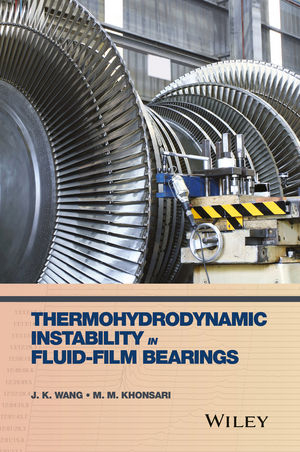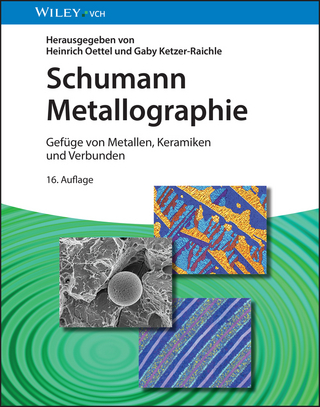
Thermohydrodynamic Instability in Fluid-Film Bearings
John Wiley & Sons Inc (Verlag)
978-0-470-05721-6 (ISBN)
- Titel z.Zt. nicht lieferbar
- Versandkostenfrei
- Auch auf Rechnung
- Artikel merken
It focuses on how the influencing factors such as rotor flexibility, manufacturing imperfections such as residual shaft unbalance, and service-related imperfections such as uneven wear affect the stability of a rotor-bearing system
It shows how the specific operating conditions such as oil inlet temperature, inlet pressure, and inlet position of a rotor-bearing system directly influence the system stability
General design guidelines have been summarized to guide the engineering system design and the correction of failure and/or malfunction
J. K. Wang, PhD, PE has over 20 years' academic and industrial experience in the design and vibration analysis of high-speed rotating machinery associated with fluid film bearings. Dr. Wang currently works as the Director of Engineering and Product Development of reciprocating and centrifugal pumps business units for TSC Group. He received his bachelor and master degrees from Xi'an Jiaotong University, and his doctoral degree from Louisiana State University. He is a professional engineer registered in the state of Texas, a certified Category IV Vibration Analyst, and Category IV Vibration Consultant listed by Vibration Institute. He holds the membership of ASME, ASM, SPE, and AISC. M. M. Khonsari holds the Dow Chemical Endowed Chair at Louisiana State University (LSU). He is holder of several US patents, has authored over 250 archival papers, 50 book chapters and special publications, and three books. Professor Khonsari is the recipient of several research awards including the ASME Mayo Hersey Award, Burt Newkirk Award, the STLE Presidential Award awards for his contributions to tribology. He is the Editor-in-Chief for ASME Journal of Tribology. Professor Khonsari is a fellow of American Society of Mechanical Engineers (ASME), Society of Tribologist and Lubrication Engineers (STLE), and American Association for the Advancement of Science (AAAS).
Preface xi
Acknowledgements xiii
1 Fundamentals of Hydrodynamic Bearings 1
1.1 Reynolds Equation 3
1.1.1 Boundary Conditions for Reynolds Equation 6
1.1.2 Short Bearing Approximation 7
1.1.3 Long Bearing Approximation 7
1.2 Short Bearing Theory 8
1.2.1 Analytical Pressure Distribution 8
1.2.2 Hydrodynamic Fluid Force 9
1.2.3 Static Performance of Short Journal Bearings 11
1.3 Long Bearing Theory 13
1.3.1 Analytical Pressure Distribution of Long Journal Bearings 13
1.3.2 Hydrodynamic Fluid Force of Long Journal Bearings 17
1.3.3 Static Performance of Long Journal Bearings 19
1.4 Finite Bearing Solution 26
References 28
2 Governing Equations for Dynamic Analysis 29
2.1 Equation of Motion 29
2.2 Decomposition of the Equations of Motion Based on Short Bearing Theory 31
2.2.1 Laminar Flow Simplification 33
2.3 Decomposition of the Equations of Motion Based on Long Bearing Theory 34
2.4 Summary 37
References 37
3 Conventional Methods on System Instability Analysis 39
3.1 Linearized Stiffness and Damping Method 41
3.1.1 Derivation of Linearized Bearing Stiffness and Damping Coefficients 41
3.1.2 Instability Threshold Speed Based on the Linearized Stiffness and Damping Coefficients 48
3.2 Nonlinear Method 51
3.2.1 Brief Description of Trial-and-Error Method 51
3.2.2 Illustration of the Trial-and-Error Method 51
3.2.3 Comparison Between Different Types of Fluid-Film Boundary Conditions 54
References 56
4 Introduction to Hopf Bifurcation Theory 59
4.1 Brief Description of Hopf Bifurcation Theory 60
4.2 Shape and Size and Stability of Periodic Solutions 61
4.3 Definition of Orbital-Asymptotically Stable with an Asymptotic Phase 62
References 62
5 Application of HBT to Fluid-Film Bearings 63
5.1 Application I: Prediction of Stability Envelope 64
5.1.1 Definition of Stability Envelope 64
5.1.2 Equations of Motion 66
5.1.3 Application of Hopf Bifurcation Theory to the Equations of Motion 67
5.1.4 Numerical Investigation of the Stability Envelope Rs 69
5.1.5 Illustrative Case Study 70
5.2 Application II: Explanation of Hysteresis Phenomenon Associated with Instability 74
5.2.1 Introduction 74
5.2.2 Definition of Hysteresis Phenomenon Associated with Instability 75
5.2.3 Experimental Investigation 77
5.2.4 Relationship between Hysteresis Phenomenon and Subcritical Bifurcation 81
5.2.5 Case Studies 83
References 88
6 Analysis of Thermohydrodynamic Instability 91
6.1 Inlet Temperature Effects 91
6.1.1 Theoretical Prediction 92
6.1.2 Experimental Studies 97
6.1.3 Explanation of Newkirk and Lewis’s Experimental Results 104
6.1.4 Design Guidelines for Improving System Stability Based on Oil Supply Temperature 104
6.2 Effects of Inlet Pressure and Inlet Position 105
6.2.1 Equations of Motion with Consideration of Inlet Pressure and Position Effects 106
6.2.2 Influence of Oil Inlet Pressure on the Instability Threshold Speed 108
6.2.3 Influence of Oil Inlet Position on the Instability Threshold Speed 110
6.2.4 Design Guidelines on Inlet Pressure and Inlet Position 111
6.3 Rotor Stiffness Effects 112
6.3.1 Equations of Motion of a Flexible Rotor 113
6.3.2 Effects of Rotor Flexibility 117
6.3.3 Comparison with the Results Based on Rigid-Rotor Model 120
6.3.4 Experimental Verification 121
6.3.5 Application Examples 122
6.3.6 Design Guidelines on Rotor Stiffness 128
6.4 Worn Bearing Bushing Effects 129
6.4.1 Wear Profile Model 129
6.4.2 Dynamic Pressure Distribution in Worn Journal Bearing 132
6.4.3 Hydrodynamic Fluid Force in Worn Journal Bearing 133
6.4.4 Example Showing the Worn Bearing Bushing Profile and Its Pressure Profile 135
6.4.5 Bearing Bushing Wear Effect on System Stability 136
6.5 Shaft Unbalance Effects 139
6.5.1 Equation of Motion with Shaft Unbalance 140
6.5.2 Decomposition of the Equations of Motion with Shaft Unbalance 142
6.5.3 Numerical Solution of the Equations of Motion 144
6.5.4 Example Showing Shaft Unbalance Effects on Journal Orbits 145
6.6 Turbulence Effects 147
6.6.1 Governing Equations for Turbulent Flow 147
6.6.2 Effects of Turbulence on the Dynamic Performance 153
6.6.3 Effects of Turbulence on the Shape and Size and Stability of the Periodic Solutions 154
6.7 Drag Force Effect 160
6.7.1 Dynamic Fluid Forces in Journal Bearings 160
6.7.2 Equations of Motion 162
6.7.3 Effects of Drag Force on the Hopf Bifurcation Profile 163
References 165
Appendix A: Derivation of the Dynamic Pressure for Long Journal Bearing 169
Reference 171
Appendix B: Integrals Used in Section 1.3 173
References 174
Appendix C: Curve-fitting Functions for Long Journal Bearings 175
Reference 177
Appendix D: Jacobian Matrix of the Equations of Motion 179
Reference 181
Appendix E: Matlab Code to Evaluate Rotor Shaft Unbalance Effects 183
E1 Main Code 183
E2 Functions 189
E2.1 Function whirl_ fullflexiblewithunbalance.m 189
E2.2 Function kshaft.m 190
Appendix F: Nomenclature 193
Index 197
| Erscheint lt. Verlag | 29.2.2016 |
|---|---|
| Verlagsort | New York |
| Sprache | englisch |
| Maße | 158 x 236 mm |
| Gewicht | 413 g |
| Themenwelt | Naturwissenschaften ► Chemie |
| Technik ► Maschinenbau | |
| ISBN-10 | 0-470-05721-1 / 0470057211 |
| ISBN-13 | 978-0-470-05721-6 / 9780470057216 |
| Zustand | Neuware |
| Informationen gemäß Produktsicherheitsverordnung (GPSR) | |
| Haben Sie eine Frage zum Produkt? |
aus dem Bereich


